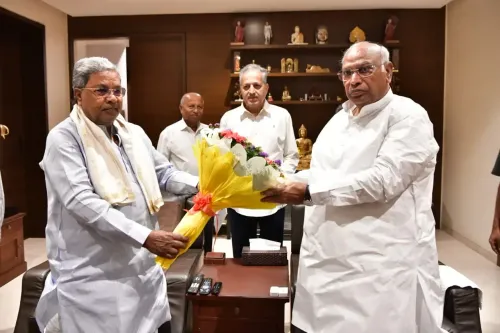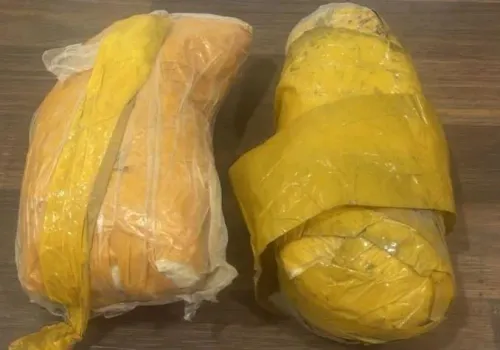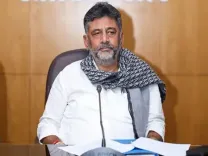How Are Armed Cartels Fueling Myanmar’s Rs 1.5 Lakh Crore Meth Trade?

Synopsis
Key Takeaways
- Myanmar is a major hub for drug trafficking, directly impacting India’s national security.
- Yaba and methamphetamine are in high demand, with drugs being smuggled into India.
- The Chin National Army supports drug cartels, complicating enforcement efforts.
- Law enforcement faces significant challenges due to the difficult terrain.
- The drug trade funds insurgency activities in northeastern India.
New Delhi, Aug 9 (NationPress) A disturbing trend is emerging in Myanmar that poses a serious threat to India’s national security.
According to both the Directorate of Revenue Intelligence (DRI) and the Intelligence Bureau, significant amounts of drugs are being trafficked from Myanmar into Nepal, Bangladesh, and Mizoram. Data shows that approximately 90 percent of the synthetic drugs entering India originate from Myanmar.
A major factor behind this surge in demand is a drug known as Yana. The Yaba tablet's demand is so high that smugglers acquire it for only Rs 10 in Myanmar but sell it in the Indian market for anywhere between Rs 1,000 to Rs 1,200. While Yaba tablets are the most sought after, there is also a rising interest in methamphetamine and fentanyl.
Drug traffickers are exploiting the fragile situation in Myanmar, complicating enforcement efforts. These substances are being smuggled alongside many refugees, some of whom act as carriers for the traffickers.
Not all drugs coming into India are intended for its market; the northeastern states serve as vital transit points.
The primary route for this trafficking spans 500 kilometers along the Mizoram border. The area's rivers, dense forests, and rugged terrain present significant challenges for security forces.
Smugglers favor Champhai district as their initial landing point, benefiting from its proximity to the Tiau River. Another hotspot for these activities is Zokhawthar village, which lies near the border.
From these locations, drugs are transported to Assam and subsequently smuggled out of the country. Investigations by agencies such as the DRI indicate that these cartels receive backing from the Chin National Army to secure the tunnels used for transporting large shipments.
The methamphetamine trade is highly profitable, primarily controlled by the Myanmar United Wa State Army, with estimates suggesting it generates around Rs 15,000 crore annually.
Additionally, the Shan State Army and the People’s Militia Forces play significant roles in the heroin trade, operating laboratories in the Kachin and Chin states. A considerable portion of the revenues from this illegal trade is funneled into procuring arms and ammunition.
A report released by the United Nations in May of this year highlighted a sharp increase in the production and trafficking of methamphetamine since 2021, particularly in the Shan State.
In 2024 alone, record seizures of 236 tons of methamphetamine were reported in East and Southeast Asia, marking a 24 percent increase from 2023. However, according to Benedikt Hofmann from the United Nations Office on Drugs and Crime (UNODC), this number only reflects what has been captured, indicating that much more is likely reaching the illicit market.
India faces significant challenges in law enforcement. To the East, India shares a vast border with Myanmar as well as a maritime border that stretches from Cox Bazar in Bangladesh to India.
Consequently, any disruption in Myanmar has direct repercussions for India, particularly in the northeastern states. Insurgent groups within India also support these cartels, benefiting financially while simultaneously fueling insurgency activities.
Over the years, Myanmar has emerged as one of the world's leading hubs for drug trafficking, lacking any effective control, which poses a direct threat to India’s national security.









